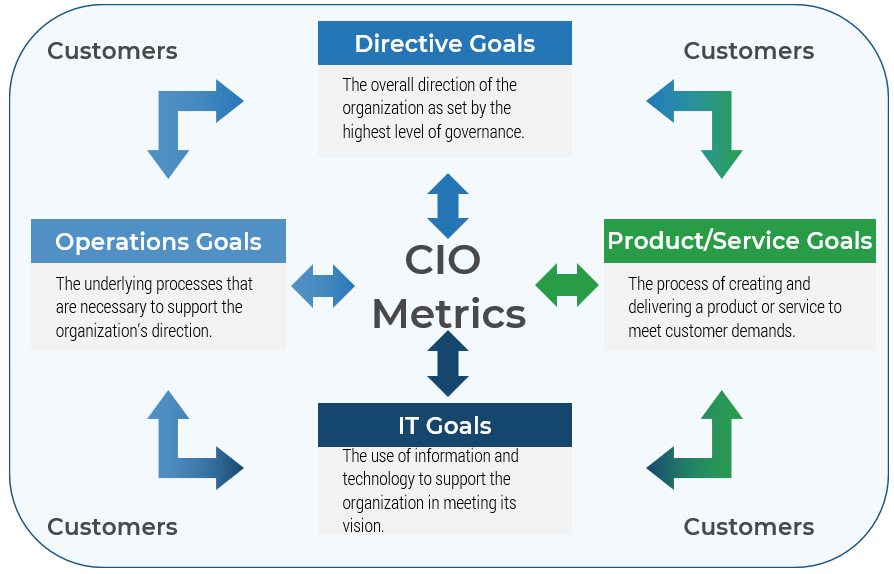Key Metrics for Every CIO

- As a CIO, you are inundated with data and information about how your IT organization is performing based on the various IT metrics that exist.
- The information we receive from metrics is often just that – information. Rarely is it used as a tool to drive the organization forward.
- CIO metrics need to consider the goals of key stakeholders in the organization.
Our Advice
Critical Insight
- The top metrics for CIOs don’t have anything to do with IT.
- CIOs should measure and monitor metrics that have a direct impact on the business.
- Be intentional with the metric and number of metrics that you monitor on a regular basis.
- Be transparent with your stakeholders on what and why you are measuring those specific metrics.
Impact and Result
- Measure fewer metrics, but measure those that will have a significant impact on how your deliver value to your organization.
- Focus on the metrics that you can take action against, rather than simply monitor.
- Ensure your metrics tie to your top priorities as a CIO.
Key Metrics for Every CIO Research & Tools
Besides the small introduction, subscribers and consulting clients within this management domain have access to:
1. Key Metrics for Every CIO deck – The top metrics every CIO should measure and act on
Leverage the top metrics for every CIO to help focus your attention and provide insight into actionable steps.
- Key Metrics for Every CIO Storyboard
Further reading
Key Metrics for Every CIO
The top six metrics for CIOs – and they have very little to do with IT
Analyst Perspective
Measure with intention
Be the strategic CIO who monitors the right metrics relevant to their priorities – regardless of industry or organization. When CIOs provide a laundry list of metrics they are consistently measuring and monitoring, it demonstrates a few things.
First, they are probably measuring more metrics than they truly care about or could action. These “standardized” metrics become something measured out of expectation, not intention; therefore, they lose their meaning and value to you as a CIO. Stop spending time on these metrics you will be unable or unwilling to address.
Secondly, it indicates a lack of trust in the IT leadership team, who can and should be monitoring these commonplace operational measures. An empowered IT leader will understand the responsibility they have to inform the CIO should a metric be derailing from the desired outcome.

|
Brittany Lutes
Senior Research Analyst Organizational Transformation Practice Info-Tech Research Group |
Executive Summary
| Your Challenge
CIOs need to measure a set of specific metrics that:
|
Common Obstacles
CIOs often cannot define these metrics because:
|
Info-Tech’s Approach
For every CIO, there are six areas that should be a focus, no matter your organization or industry. These six priorities will inform the metrics worth measuring:
|
Info-Tech Insight
The top metrics for a CIO to measure and monitor have very little to do with IT and everything to do with ensuring the success of the business.
Your challenge
CIOs are not using metrics as a personal tool to advance the organization:
|
“CIOs are businesspeople first and technology people second.” (Myles Suer, Source: CIO, 2019.) |
Common obstacles
These barriers make this challenge difficult to address for many CIOs:
|
CIO priorities are business priorities
46% of CIOs are transforming operations, focused on customer experiences and employee productivity. (Source: Foundry, 2022.) Finances (41.3%) and customers (28.1%) remain the top two focuses for CIOs when measuring IT effectiveness. All other focuses combine for the remaining 30.6%. (Source: Journal of Informational Technology Management, 2018.) |
Info-Tech’s approach
| Organizational goals inform CIO metrics
|
The Info-Tech difference:
|
CIO priorities
| MANAGING TO A BUDGET
Reducing operational costs and increasing strategic IT spend. |
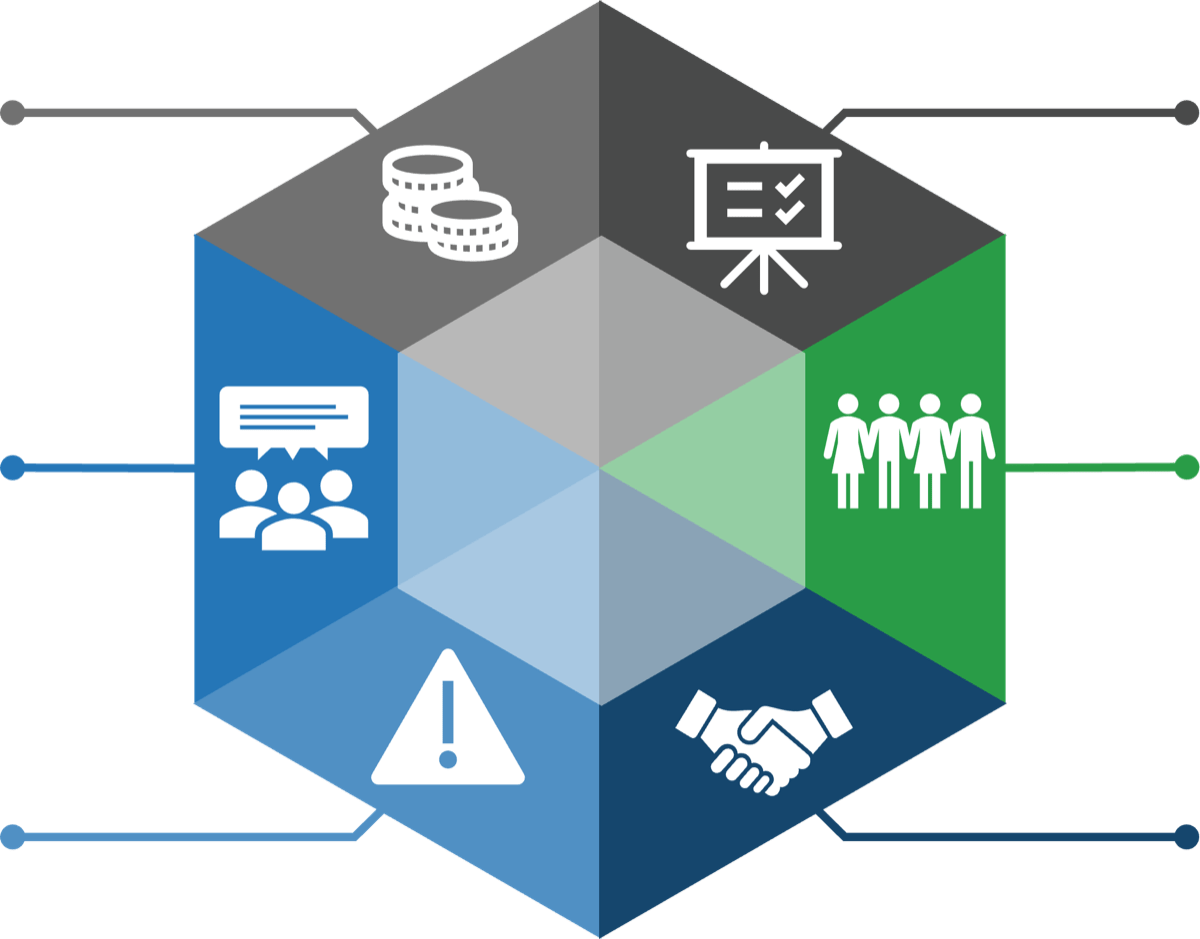
|
DELIVERING ON BUSINESS OBJECTIVES
Aligning IT initiatives to the vision of the organization. |
| CUSTOMER SATISFACTION
Directly and indirectly impacting customer experience. |
EMPLOYEE ENGAGEMENT
Creating an IT workforce of engaged and purpose-driven people. |
|
| RISK MANAGEMENT
Actively knowing and mitigating threats to the organization. |
BUSINESS LEADERSHIP RELATONS
Establishing a network of influential business leaders. |
High-level process flow
How do we use the CIO metrics?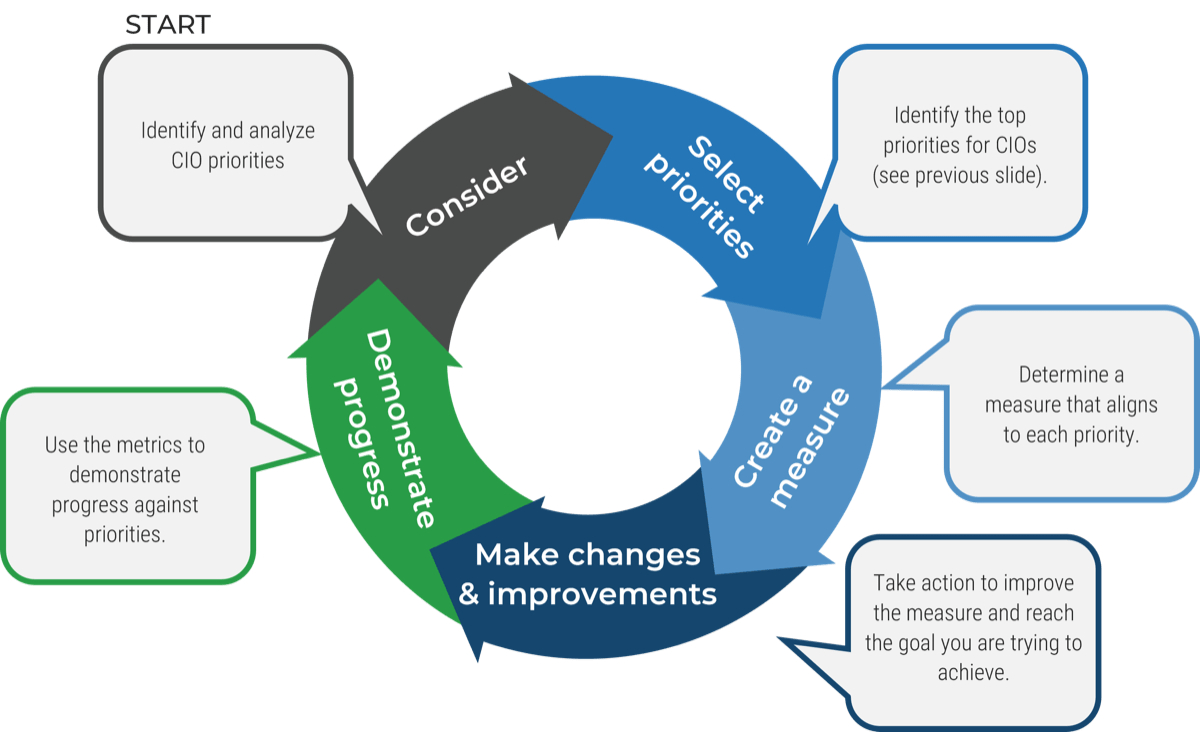
|
Using priority-based metrics allows you to make incremental improvements that can be measured and reported on, which makes program maturation a natural process. |
Example CIO dashboard
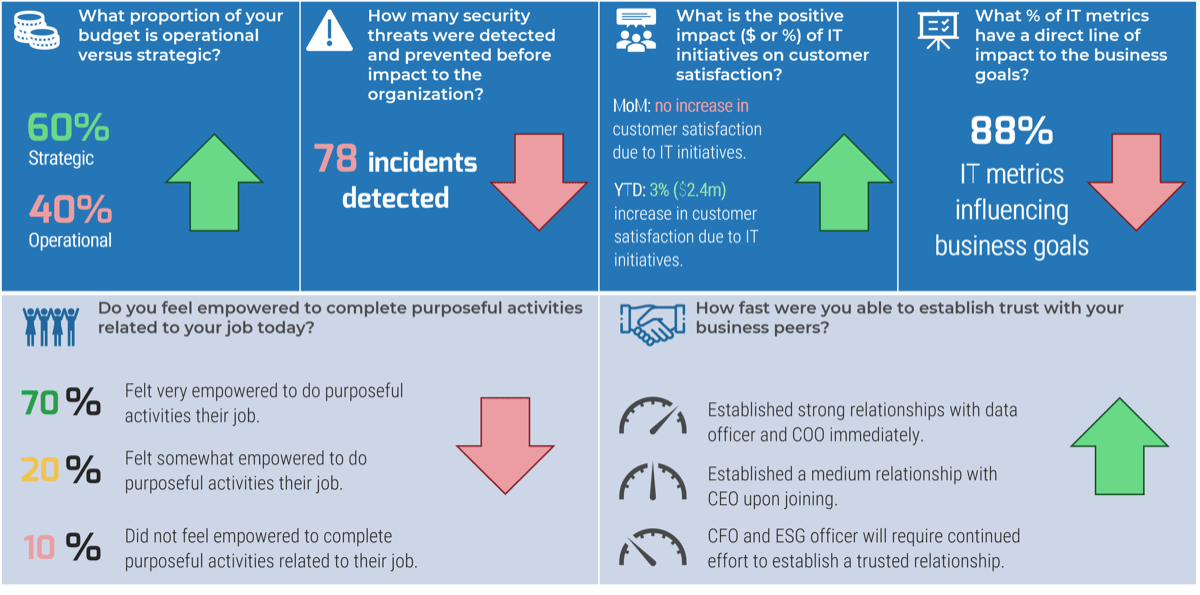
* Arrow indicates month-over-month trend
Harness the value of metric data
Metrics are rarely used accurately as a tool
|
"The way to make a metric successful is by understanding why you are measuring it." (Jeff Neyland CIO) |
CIOs measure strategic business metrics
Keep the IT leadership accountable for operational metrics
|
As a CIO, avoid spending time on operational metrics such as:
|
While operational metrics are important to your organization, IT leaders should be empowered and responsible for their management.
SECTION 1
Actively Managing IT Risks
Actively manage IT risks
The impact of IT risks to your organization cannot be ignored any further
|
Risk management metric:Number of critical IT threats that were detected and prevented before impact to the organization. |
Organizations that have a clear risk tolerance can use their risk assessments to better inform their decisions.
Specifically, taking risks that could lead to a high return on investment or other key organizational drivers.
Protect the organization from more than just cyber threats
Other risk-related metrics:
|
49%Investing in RiskHeads of IT “cited increasing cybersecurity protections as the top business initiative driving IT investments this year” (Source: Foundry, 2022.) |
SECTION 2
Delivering on Business Objectives
Delivering on business objectives
Deliver on initiatives that bring value to your organization and stop benchmarking
|
Business Objective Alignment Metric:Percentage of IT metrics have a direct line of impact to the business goals |
- Insight into how well that organization performed against their goals.
- That other organizations goals are likely very different from your own organization's goals.
- It often aggregates the scores so much; good and bad performers stop being clearly identified.
Provide a clear line of sight from IT metrics to business goals
Other business alignment metrics:
|
50%CIOs drive the businessThe percentage of CEOs that recognize the CIO as the main driver of the business strategy in the next 2-3 years. (Source: Deloitte, 2020.) |
SECTION 3
Impact on Customer Satisfaction
Influencing end-customer satisfaction
Directly or indirectly, IT influences how satisfied the customer is with their product or service
|
Customer satisfaction metric:What is the positive impact ($ or %) of IT initiatives on customer satisfaction? |
Be the one to suggest new IT initiatives that will impact the customer experience – stop waiting for other business leaders to make the recommendation.
Enhance the end-customer experience with I&T
Other customer satisfaction metrics:
|
41%Direct CX interactionIn 2022, 41% of IT heads were directly interacting with the end customer. (Source: Foundry, 2022.) |
SECTION 4
Keeping Employees Engaged
Keeping employees engaged
This is about more than just an annual engagement survey
|
Employee engagement metric:Number of employees who feel empowered to complete purposeful activities related to their job each day |
- Innovation
- Productivity
- Performance
- Teamwork
Employees daily tasks need to have purpose
Other employee engagement metrics:
|
26%Act on engagementOnly 26% of leaders actually think about and act on engagement every single day. (Source: SHRM, 2022.) |
SECTION 5
Establishing Trusted Business Relationships
Establishing trusted business partnerships
Leverage your relationships with other C-suite executives to demonstrate IT’s value
|
Business leadership relationship metric:Ability to influence business decisions with trusted partners. |
- Chief Sustainability Officer
- Chief Revenue Officer
- Chief Marketing Officer
- Chief Data Officer
Influence business decisions with trusted partners
Other business relations metrics:
|
60%Enterprise-wide collaboration“By 2023, 60% of CIOs will be primarily measured for their ability to co-create new business models and outcomes through extensive enterprise and ecosystem-wide collaboration.” (Source: IDC, 2021.) |
SECTION 6
Managing to a Budget
Managing to a budget
Every CIO needs to be able to spend within budget while increasing their strategic impact
|
Budget management metric:Proportion of IT budget that is strategic versus operational. |
CIOs need to see their IT function as its own business – budget and spend like a CEO.
Demonstrate IT’s ability to spend strategically
Other budget management metrics:
Action steps to take:
| 90%Direct CX interactionNinety percent of CIOs expect their budget to increase or remain the same in their next fiscal year. (Source: Foundry, 2022.) |
Research contributors and experts

|
Jeff Neyland
Chief Information Officer – University of Texas at Arlington |

|
Brett Trelfa
SVP and CIO – Arkansas Blue Cross Blue Shield |

|
Lynn Fyhrlund
Chief Information Officer – Milwaukee County Department of Administrative Services |
Info-Tech Research Group
| Vicki Van Alphen | Executive Counselor | Ibrahim Abdel-Kader | Research Analyst |
| Mary Van Leer | Executive Counselor | Graham Price | Executive Counselor |
| Jack Hakimian | Vice President Research | Valence Howden | Principal Research Director |
| Mike Tweedie | CIO Practice Lead | Tony Denford | Organization Transformation Practice Lead |
Related Info-Tech Research
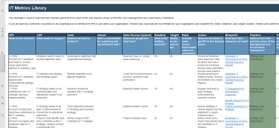
|
IT Metrics Library
|
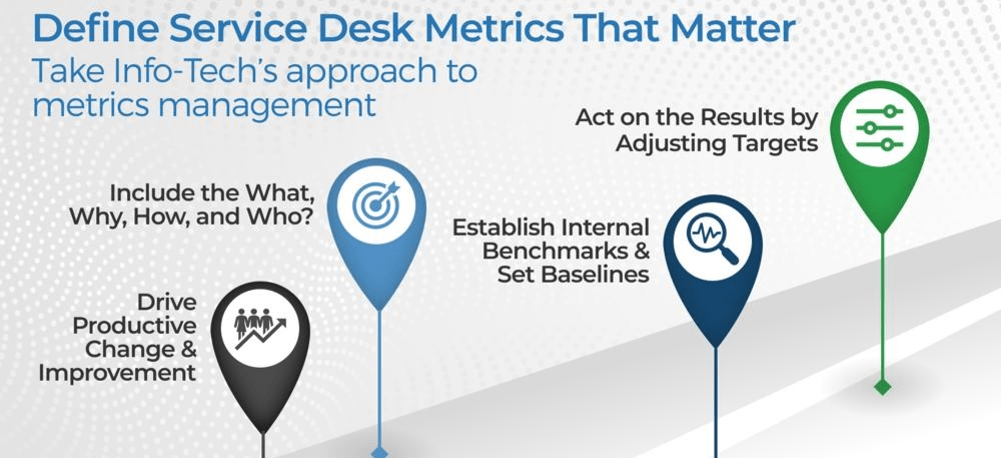
|
Define Service Desk Metrics That Matter
|
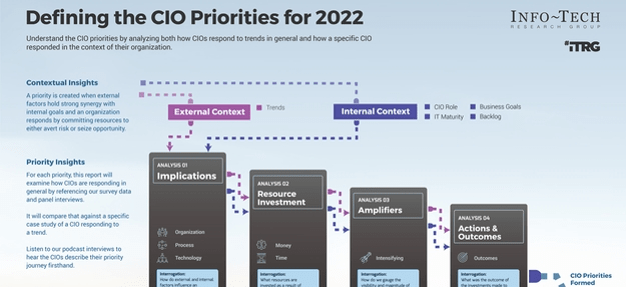
|
CIO Priorities 2022
|
Bibliography
“Developing and Sustaining Employee Engagement.” SHRM, 2022.
Dopson, Elise. “KPIs Vs. Metrics: What’s the Difference & How Do You Measure Both?” Databox, 23 Jun. 2021.
Shirer, Michael, and Sarah Murray. “IDC Unveils Worldwide CIO Agenda 2022 Predictions.” IDC, 27 Oct. 2021.
Suer, Myles. “The Most Important Metrics to Drive IT as a Business.” CIO, 19 Mar. 2019.
“The new CIO: Business Savvy.” Deloitte Insights. Deloitte, 2020.
“2022 State of the CIO: Rebalancing Act: CIO’s Operational Pandemic-Era Innovation.” Foundry, 2022.
“Why Employee Engagement Matters for Leadership at all Levels.” Walden University, 20 Dec. 2019.
Zhang, Xihui, et al. “How to Measure IT Effectiveness: The CIO’s Perspective.” Journal of Informational Technology Management, 29(4). 2018.
Buying Options
Key Metrics for Every CIO
IT Risk Management · IT Leadership & Strategy implementation · Operational Management · Service Delivery · Organizational Management · Process Improvements · ITIL, CORM, Agile · Cost Control · Business Process Analysis · Technology Development · Project Implementation · International Coordination · In & Outsourcing · Customer Care · Multilingual: Dutch, English, French, German, Japanese · Entrepreneur
Tymans Group is a brand by Gert Taeymans BV
Gert Taeymans bv
Europe: Koning Albertstraat 136, 2070 Burcht, Belgium — VAT No: BE0685.974.694 — phone: +32 (0) 468.142.754
USA: 4023 KENNETT PIKE, SUITE 751, GREENVILLE, DE 19807 — Phone: 1-917-473-8669
Copyright 2017-2022 Gert Taeymans BV
